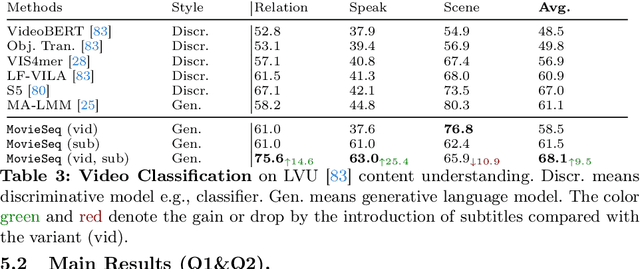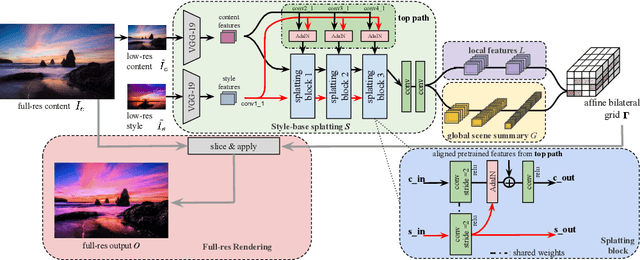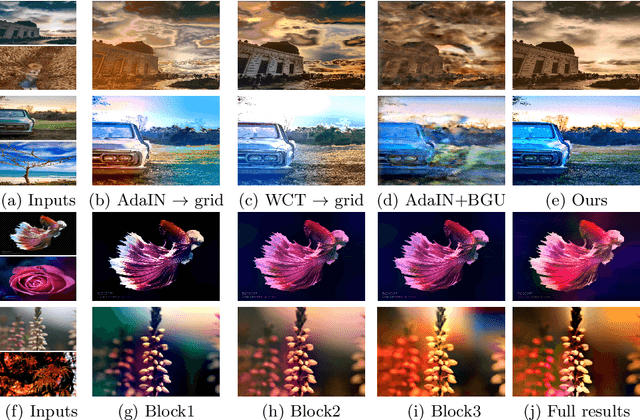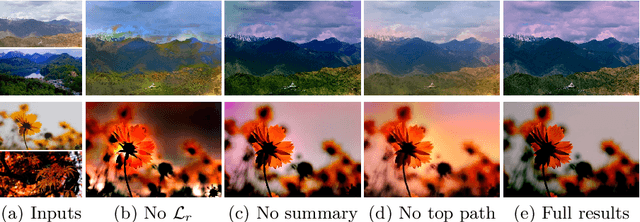Xide Xia
Sid
DirectorLLM for Human-Centric Video Generation
Dec 19, 2024



Abstract:In this paper, we introduce DirectorLLM, a novel video generation model that employs a large language model (LLM) to orchestrate human poses within videos. As foundational text-to-video models rapidly evolve, the demand for high-quality human motion and interaction grows. To address this need and enhance the authenticity of human motions, we extend the LLM from a text generator to a video director and human motion simulator. Utilizing open-source resources from Llama 3, we train the DirectorLLM to generate detailed instructional signals, such as human poses, to guide video generation. This approach offloads the simulation of human motion from the video generator to the LLM, effectively creating informative outlines for human-centric scenes. These signals are used as conditions by the video renderer, facilitating more realistic and prompt-following video generation. As an independent LLM module, it can be applied to different video renderers, including UNet and DiT, with minimal effort. Experiments on automatic evaluation benchmarks and human evaluations show that our model outperforms existing ones in generating videos with higher human motion fidelity, improved prompt faithfulness, and enhanced rendered subject naturalness.
Apollo: An Exploration of Video Understanding in Large Multimodal Models
Dec 13, 2024



Abstract:Despite the rapid integration of video perception capabilities into Large Multimodal Models (LMMs), the underlying mechanisms driving their video understanding remain poorly understood. Consequently, many design decisions in this domain are made without proper justification or analysis. The high computational cost of training and evaluating such models, coupled with limited open research, hinders the development of video-LMMs. To address this, we present a comprehensive study that helps uncover what effectively drives video understanding in LMMs. We begin by critically examining the primary contributors to the high computational requirements associated with video-LMM research and discover Scaling Consistency, wherein design and training decisions made on smaller models and datasets (up to a critical size) effectively transfer to larger models. Leveraging these insights, we explored many video-specific aspects of video-LMMs, including video sampling, architectures, data composition, training schedules, and more. For example, we demonstrated that fps sampling during training is vastly preferable to uniform frame sampling and which vision encoders are the best for video representation. Guided by these findings, we introduce Apollo, a state-of-the-art family of LMMs that achieve superior performance across different model sizes. Our models can perceive hour-long videos efficiently, with Apollo-3B outperforming most existing $7$B models with an impressive 55.1 on LongVideoBench. Apollo-7B is state-of-the-art compared to 7B LMMs with a 70.9 on MLVU, and 63.3 on Video-MME.
Accelerating Multimodel Large Language Models by Searching Optimal Vision Token Reduction
Nov 30, 2024



Abstract:Prevailing Multimodal Large Language Models (MLLMs) encode the input image(s) as vision tokens and feed them into the language backbone, similar to how Large Language Models (LLMs) process the text tokens. However, the number of vision tokens increases quadratically as the image resolutions, leading to huge computational costs. In this paper, we consider improving MLLM's efficiency from two scenarios, (I) Reducing computational cost without degrading the performance. (II) Improving the performance with given budgets. We start with our main finding that the ranking of each vision token sorted by attention scores is similar in each layer except the first layer. Based on it, we assume that the number of essential top vision tokens does not increase along layers. Accordingly, for Scenario I, we propose a greedy search algorithm (G-Search) to find the least number of vision tokens to keep at each layer from the shallow to the deep. Interestingly, G-Search is able to reach the optimal reduction strategy based on our assumption. For Scenario II, based on the reduction strategy from G-Search, we design a parametric sigmoid function (P-Sigmoid) to guide the reduction at each layer of the MLLM, whose parameters are optimized by Bayesian Optimization. Extensive experiments demonstrate that our approach can significantly accelerate those popular MLLMs, e.g. LLaVA, and InternVL2 models, by more than $2 \times$ without performance drops. Our approach also far outperforms other token reduction methods when budgets are limited, achieving a better trade-off between efficiency and effectiveness.
The Llama 3 Herd of Models
Jul 31, 2024Abstract:Modern artificial intelligence (AI) systems are powered by foundation models. This paper presents a new set of foundation models, called Llama 3. It is a herd of language models that natively support multilinguality, coding, reasoning, and tool usage. Our largest model is a dense Transformer with 405B parameters and a context window of up to 128K tokens. This paper presents an extensive empirical evaluation of Llama 3. We find that Llama 3 delivers comparable quality to leading language models such as GPT-4 on a plethora of tasks. We publicly release Llama 3, including pre-trained and post-trained versions of the 405B parameter language model and our Llama Guard 3 model for input and output safety. The paper also presents the results of experiments in which we integrate image, video, and speech capabilities into Llama 3 via a compositional approach. We observe this approach performs competitively with the state-of-the-art on image, video, and speech recognition tasks. The resulting models are not yet being broadly released as they are still under development.
Learning Video Context as Interleaved Multimodal Sequences
Jul 31, 2024



Abstract:Narrative videos, such as movies, pose significant challenges in video understanding due to their rich contexts (characters, dialogues, storylines) and diverse demands (identify who, relationship, and reason). In this paper, we introduce MovieSeq, a multimodal language model developed to address the wide range of challenges in understanding video contexts. Our core idea is to represent videos as interleaved multimodal sequences (including images, plots, videos, and subtitles), either by linking external knowledge databases or using offline models (such as whisper for subtitles). Through instruction-tuning, this approach empowers the language model to interact with videos using interleaved multimodal instructions. For example, instead of solely relying on video as input, we jointly provide character photos alongside their names and dialogues, allowing the model to associate these elements and generate more comprehensive responses. To demonstrate its effectiveness, we validate MovieSeq's performance on six datasets (LVU, MAD, Movienet, CMD, TVC, MovieQA) across five settings (video classification, audio description, video-text retrieval, video captioning, and video question-answering). The code will be public at https://github.com/showlab/MovieSeq.
GenAI-Bench: Evaluating and Improving Compositional Text-to-Visual Generation
Jun 19, 2024



Abstract:While text-to-visual models now produce photo-realistic images and videos, they struggle with compositional text prompts involving attributes, relationships, and higher-order reasoning such as logic and comparison. In this work, we conduct an extensive human study on GenAI-Bench to evaluate the performance of leading image and video generation models in various aspects of compositional text-to-visual generation. We also compare automated evaluation metrics against our collected human ratings and find that VQAScore -- a metric measuring the likelihood that a VQA model views an image as accurately depicting the prompt -- significantly outperforms previous metrics such as CLIPScore. In addition, VQAScore can improve generation in a black-box manner (without finetuning) via simply ranking a few (3 to 9) candidate images. Ranking by VQAScore is 2x to 3x more effective than other scoring methods like PickScore, HPSv2, and ImageReward at improving human alignment ratings for DALL-E 3 and Stable Diffusion, especially on compositional prompts that require advanced visio-linguistic reasoning. We will release a new GenAI-Rank benchmark with over 40,000 human ratings to evaluate scoring metrics on ranking images generated from the same prompt. Lastly, we discuss promising areas for improvement in VQAScore, such as addressing fine-grained visual details. We will release all human ratings (over 80,000) to facilitate scientific benchmarking of both generative models and automated metrics.
Evaluating Text-to-Visual Generation with Image-to-Text Generation
Apr 01, 2024



Abstract:Despite significant progress in generative AI, comprehensive evaluation remains challenging because of the lack of effective metrics and standardized benchmarks. For instance, the widely-used CLIPScore measures the alignment between a (generated) image and text prompt, but it fails to produce reliable scores for complex prompts involving compositions of objects, attributes, and relations. One reason is that text encoders of CLIP can notoriously act as a "bag of words", conflating prompts such as "the horse is eating the grass" with "the grass is eating the horse". To address this, we introduce the VQAScore, which uses a visual-question-answering (VQA) model to produce an alignment score by computing the probability of a "Yes" answer to a simple "Does this figure show '{text}'?" question. Though simpler than prior art, VQAScore computed with off-the-shelf models produces state-of-the-art results across many (8) image-text alignment benchmarks. We also compute VQAScore with an in-house model that follows best practices in the literature. For example, we use a bidirectional image-question encoder that allows image embeddings to depend on the question being asked (and vice versa). Our in-house model, CLIP-FlanT5, outperforms even the strongest baselines that make use of the proprietary GPT-4V. Interestingly, although we train with only images, VQAScore can also align text with video and 3D models. VQAScore allows researchers to benchmark text-to-visual generation using complex texts that capture the compositional structure of real-world prompts. We introduce GenAI-Bench, a more challenging benchmark with 1,600 compositional text prompts that require parsing scenes, objects, attributes, relationships, and high-order reasoning like comparison and logic. GenAI-Bench also offers over 15,000 human ratings for leading image and video generation models such as Stable Diffusion, DALL-E 3, and Gen2.
DIME-FM: DIstilling Multimodal and Efficient Foundation Models
Mar 31, 2023Abstract:Large Vision-Language Foundation Models (VLFM), such as CLIP, ALIGN and Florence, are trained on large-scale datasets of image-caption pairs and achieve superior transferability and robustness on downstream tasks, but they are difficult to use in many practical applications due to their large size, high latency and fixed architectures. Unfortunately, recent work shows training a small custom VLFM for resource-limited applications is currently very difficult using public and smaller-scale data. In this paper, we introduce a new distillation mechanism (DIME-FM) that allows us to transfer the knowledge contained in large VLFMs to smaller, customized foundation models using a relatively small amount of inexpensive, unpaired images and sentences. We transfer the knowledge from the pre-trained CLIP-ViTL/14 model to a ViT-B/32 model, with only 40M public images and 28.4M unpaired public sentences. The resulting model "Distill-ViT-B/32" rivals the CLIP-ViT-B/32 model pre-trained on its private WiT dataset (400M image-text pairs): Distill-ViT-B/32 achieves similar results in terms of zero-shot and linear-probing performance on both ImageNet and the ELEVATER (20 image classification tasks) benchmarks. It also displays comparable robustness when evaluated on five datasets with natural distribution shifts from ImageNet.
Real-time Localized Photorealistic Video Style Transfer
Oct 20, 2020



Abstract:We present a novel algorithm for transferring artistic styles of semantically meaningful local regions of an image onto local regions of a target video while preserving its photorealism. Local regions may be selected either fully automatically from an image, through using video segmentation algorithms, or from casual user guidance such as scribbles. Our method, based on a deep neural network architecture inspired by recent work in photorealistic style transfer, is real-time and works on arbitrary inputs without runtime optimization once trained on a diverse dataset of artistic styles. By augmenting our video dataset with noisy semantic labels and jointly optimizing over style, content, mask, and temporal losses, our method can cope with a variety of imperfections in the input and produce temporally coherent videos without visual artifacts. We demonstrate our method on a variety of style images and target videos, including the ability to transfer different styles onto multiple objects simultaneously, and smoothly transition between styles in time.
Joint Bilateral Learning for Real-time Universal Photorealistic Style Transfer
Apr 27, 2020



Abstract:Photorealistic style transfer is the task of transferring the artistic style of an image onto a content target, producing a result that is plausibly taken with a camera. Recent approaches, based on deep neural networks, produce impressive results but are either too slow to run at practical resolutions, or still contain objectionable artifacts. We propose a new end-to-end model for photorealistic style transfer that is both fast and inherently generates photorealistic results. The core of our approach is a feed-forward neural network that learns local edge-aware affine transforms that automatically obey the photorealism constraint. When trained on a diverse set of images and a variety of styles, our model can robustly apply style transfer to an arbitrary pair of input images. Compared to the state of the art, our method produces visually superior results and is three orders of magnitude faster, enabling real-time performance at 4K on a mobile phone. We validate our method with ablation and user studies.
 Add to Chrome
Add to Chrome Add to Firefox
Add to Firefox Add to Edge
Add to Edge